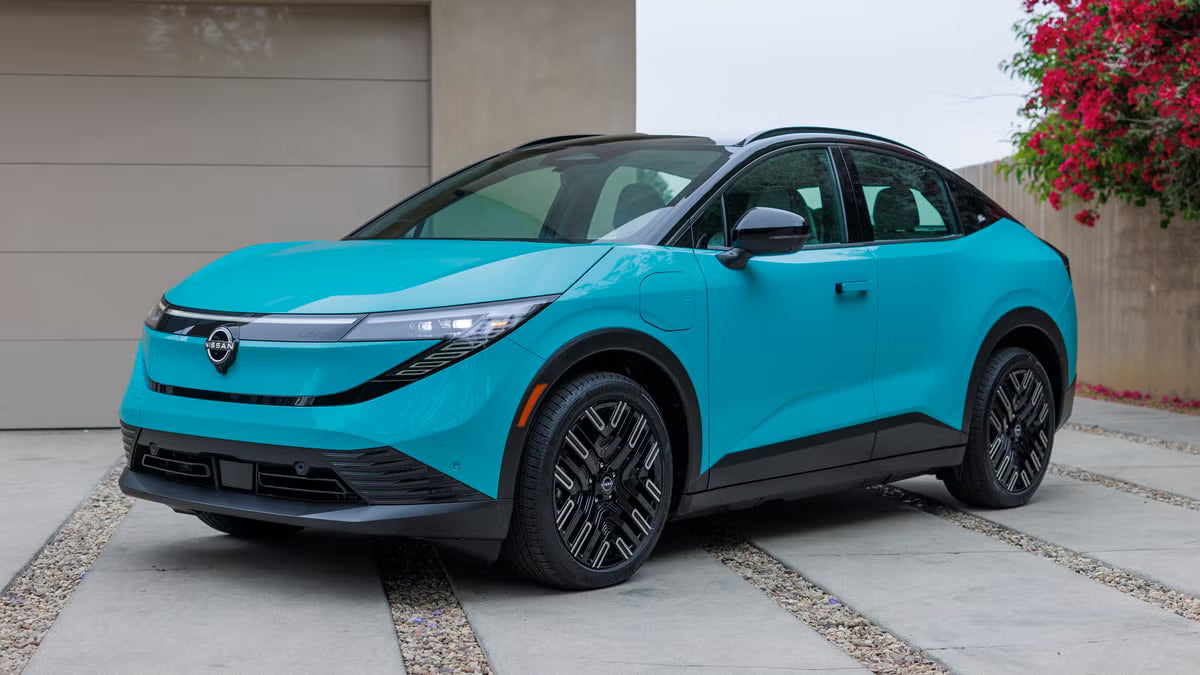After a two-year break, the 2027 Chevrolet Bolt returns—cheaper, quicker to charge, and smarter than ever. But it’s not alone in the budget EV fight. The 2026 Nissan Leaf is back too, fully redesigned for its third generation and ready to prove it still belongs in the conversation.
Both models now start around $30,000, making them the most affordable new EVs in America—at least $3,000 below the next cheapest option, the Chevrolet Equinox EV. So, which one deserves your money?

Pricing & Availability
The 2027 Chevy Bolt starts at $29,990 (including destination) and arrives in early 2026. A stripped-down LT trim will follow later for just $28,995.
The 2026 Nissan Leaf S+ currently starts at $31,485, but Nissan plans to add an even cheaper base “S” trim with a smaller battery and shorter range. Once that happens, the Leaf could undercut the Bolt—but for now, GM holds the title of America’s cheapest EV.
Design & Platform
At first glance, the new Bolt looks familiar—because much of its exterior carries over from the previous Bolt EUV discontinued in 2023. But under the surface, it’s practically a new car, with a new battery, faster charging system, upgraded motor, and revamped cabin.
By contrast, the Leaf went through a complete transformation. Built on a brand-new platform, the third-gen Leaf gains more range, power, and speed while wearing a cleaner, more modern look.
Charging & Power Capabilities
Both cars now adopt NACS ports, allowing owners to plug into Tesla Superchargers without adapters. However, you’ll need a separate adapter to use non-NACS chargers like Electrify America.
Interestingly, the Leaf adds a second J1772 port just for AC charging—an unusual but flexible setup.
The Bolt offers vehicle-to-home (V2H) capability, letting it power your house during outages. The Leaf supports vehicle-to-load (V2L) for powering smaller devices or tools through an adapter.
Both charge at up to 150 kW on DC fast chargers, but the Bolt’s 11.5 kW onboard AC charger beats the Leaf’s 7.2 kW system, meaning quicker overnight charging at home.

Battery & Range
Here’s where Nissan takes the lead. The Leaf S+ delivers up to 303 miles of range from its 75-kWh lithium-ion battery and can charge from 10% to 80% in about 35 minutes.
The Bolt’s smaller 65-kWh LFP battery offers 255 miles of range but makes up for it with faster 26-minute 10–80% charging. The Bolt also includes a standard heat pump, while the Leaf only includes it on higher trims.
Performance
Both EVs are front-wheel drive, and while neither is built for racing, they’re zippy enough for daily use.
-
Bolt: 210 hp, 169 lb-ft torque
-
Leaf: 214 hp, 261 lb-ft torque
Despite its lower torque, the Bolt’s lighter body (3,766 lbs vs. Leaf’s 4,200+) helps balance performance.
Interior, Tech & Space
Inside, both cars maximize space and practicality. The Bolt provides a bit more passenger room, while the Leaf wins on cargo capacity.
The Bolt features an 11-inch digital cluster and 11.3-inch infotainment display with Google Built-in—but no Apple CarPlay or Android Auto.
The Leaf fights back with dual 12.3-inch displays, wireless CarPlay and Android Auto, and even a Google-based system on higher trims. For many, that CarPlay support alone could be a dealbreaker.
Safety & Driver Assistance
The Leaf comes standard with Nissan’s Safety Shield 360 suite, including Automatic Emergency Braking, Lane Departure Prevention, and ProPILOT Assist for semi-autonomous highway driving.
The Bolt counters with its own impressive tech list: Adaptive Cruise Control, Blind Zone Steering Assist, Lane Keep Assist, and Intersection Emergency Braking. Both cars are packed with features you’d expect from pricier EVs.

Verdict: Two Affordable EVs That Actually Make Sense
With federal EV tax credits gone, America desperately needs affordable electric cars—and both of these fit the bill.
The Bolt edges out with a lower price, quicker home charging, and more passenger space. The Leaf, meanwhile, offers longer range, higher torque, and Apple CarPlay integration.
Ultimately, both are smart, wallet-friendly EVs that bring electric mobility to the masses. Your choice may come down to priorities—range and features (Leaf) or value and practicality (Bolt).
2027 Chevrolet Bolt vs. 2026 Nissan Leaf Comparison
| Specification | 2027 Chevrolet Bolt | 2026 Nissan Leaf |
|---|---|---|
| Starting price (with destination) | $28,995 | $31,485 |
| Driving range | 255 miles (GM-est.) | 259–303 miles (EPA-est.) |
| Battery capacity | 65 kWh | 75 kWh |
| Max charging (DC) | 150 kW | 150 kW |
| Max charging (AC) | 11.5 kW | 7.2 kW |
| 10–80% fast charge | 26 min | 35 min |
| Heat pump | Standard | Optional (not base) |
| Power | 210 hp | 214 hp |
| Torque | 169 lb-ft | 261 lb-ft |
| Length | 169.6 in | 173.4 in |
| Width | 69.7 in | 71.3 in |
| Height | 63.9 in | 61.3 in |
| Wheelbase | 105.3 in | 105.9 in |
| Weight | 3,766 lbs | 4,206–4,393 lbs |
| Cargo (seats up) | 16.2 cu ft | 20 cu ft |
| Cargo (seats folded) | 56.3 cu ft | 55.5 cu ft |
| Front headroom | 39.1–40 in | 39.9 in |
| Front legroom | 44.3 in | 42.4 in |
| Rear headroom | 37.8 in | 36.6–37.2 in |
| Rear legroom | 39.1 in | 31.8 in |
Recommend Reading: 2026 Tesla Model Y vs. 2025 Ford Mustang Mach-E: EV Rivals Face Off Again








Share:
2027 Chevy Bolt Gets Faster Charging and Lower Price
Top Electric Vehicles to Consider in October 2025 (U.S. Market)